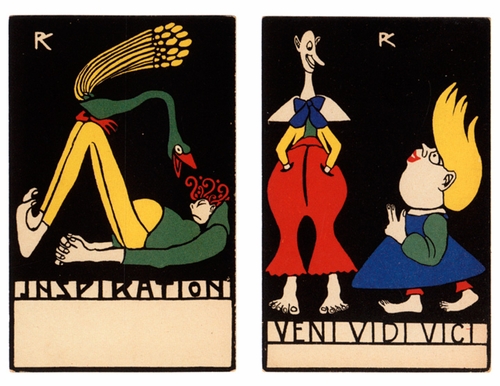ARTBOOK BLOGEventsStore NewsMuseum Stores of the MonthNew Title ReleasesStaff PicksImage GalleryBooks in the MediaExcerpts & EssaysArtbook InterviewsEx LibrisAt First SightThe Artbook 2023 Gift GuidesArtbook Featured Image ArchiveArtbook D.A.P. Events ArchiveDATE 6/2/2024 Green-Wood Cemetery presents Eugene Richards launching 'Remembrance Garden: A Portrait of Green-Wood Cemetery'DATE 6/1/2024 There's no such thing as being extra in June! Pride Month Staff Picks 2024DATE 5/24/2024 Beautifully illustrated essays on Arab ModernistsDATE 5/19/2024 Of bodies and knowing, in 'Christina Quarles: Collapsed Time'DATE 5/17/2024 192 Books presents Robert Storr and Lloyd Wise launching Heni 'Focal Points' seriesDATE 5/17/2024 Lee Quiñones signing at Perrotin Store New YorkDATE 5/15/2024 A gorgeous new book on Bauhaus textile innovator Otti BergerDATE 5/13/2024 Rizzoli Bookstore presents Tony Caramanico and Zack Raffin launching 'Montauk Surf Journals'DATE 5/12/2024 Black Feminist World-Building in LaToya Ruby Frazier’s ‘Monuments of Solidarity’DATE 5/10/2024 Artbook at MoMA PS1 Bookstore presents Yasmine Ostendorf-Rodríguez and Juan Ferrer on 'Let's Become Fungal!'DATE 5/8/2024 The World of Tim Burton in rare, archival materialsDATE 5/5/2024 Eugene Richards' eloquent new photobook documenting Green-Wood CemeteryDATE 5/5/2024 Artbook at Hauser & Wirth LA Bookstore presents Yasmine Ostendorf-Rodríguez and David Horvitz on 'Let's Become Fungal' | AT FIRST SIGHTCORY REYNOLDS | DATE 12/22/2010Postcards of the Wiener WerkstätteRenowned philanthropist and businessman Leonard A. Lauder began a lifetime of passionate collecting at the age of eight, when he purchased his first postcard – "a vividly colored postcard of the Empire State Building, set against the bright orange sky of New York City at sunset." Its "majesty so awed" him that he bought five copies of that same card. Over the following decades, Lauder has gone on to amass one of the most respected and sophisticated postcard collections in the world, including the nearly complete set of Wiener Werkstätte postcards reproduced in this astonishing catalogue raisonné, published by New York's Neue Gallery – the recipient of Lauder's recently donated collection of almost 1000 items. Below are some excerpts from Lauder's introductory essay, alongside a selection of the postcards themselves."One brilliant summer day in the early 1970s, my Viennese-born wife, Evelyn, and I were strolling down a narrow street in her native city when my eye was drawn to an image in a shop window. It was a postcard, though not anything like the pictures of cities, sites, faces and events that I had been amassing since childhood. The array of colors and the rhythmic patterns of elegant ease are still imprinted in my mind. I had discovered – or better yet, was seduced by – the world of the Wiener Werkstätte, a world that valued visual integrity, be it the design of a postcard or a post office."  "Once I began to look at other Wiener Werkstätte cards in earnest, I was captivated by the romance of a Vienna past. I came to realize that our image of this fin-de-siècle European capital – its distinctive cafés, interiors, architecture, parks and fashion – has been shaped to a large extent by the power of the Wiener Werkstätte…"  "I am often asked which one is my favorite card. My answer is that they are like my children: each one has its own beauty and merit. But the Wiener Werkstätte postcards hold a special place in my heart. They have their roots in my first art collection, which started in the late 1960s when I bought a Gustav Klimt drawing from the late dealer Serge Sabarsky…"  "The series of nearly one thousand postcards was designed and produced by the Wiener Werkstätte's own publishing firm, from 1907 until the beginning of the First World War. The visionary artists and architects behind the Wiener Werkstätte valued the postcard as an ideal format for their own social and aesthetic program: to imbue objects of daily use with beauty and the elements of good design."  "The Wiener Werkstätte postcards were produced in small runs (ranging approximately from as small as one hundred to as large as two thousand) and in some of the most innovative and high-end print mediums – most often lithography but also occasionally woodcuts and pochoir."  "Demonstrating the same concern for quality and visual finesse found in other objects produced by the Wiener Werkstätte, they could nonetheless be acquired for a fraction of the cost of the firm's fine glassware, silver or textiles. Some groups of postcards were oversized to enhance the perception of them as miniature works of art. Others served more mundane purposes in the "complete home" envisioned by the workshop architects and designers, such as those intended to be place cards at fashionable tables."  "The cachet of the Wiener Werkstätte name, plus the brilliant colors and variety of image types, helped the company thrive; by producing consecutively numbered cards, the Wiener Werkstätte also fed the collecting craze. Middle-class consumers could purchase and display original prints, albeit in small scale, created by the foremost artists of the day, including Oskar Kokoschka and Egon Schiele, each of whom created lithographs specifically for the Wiener Werkstätte postcard line."  |

